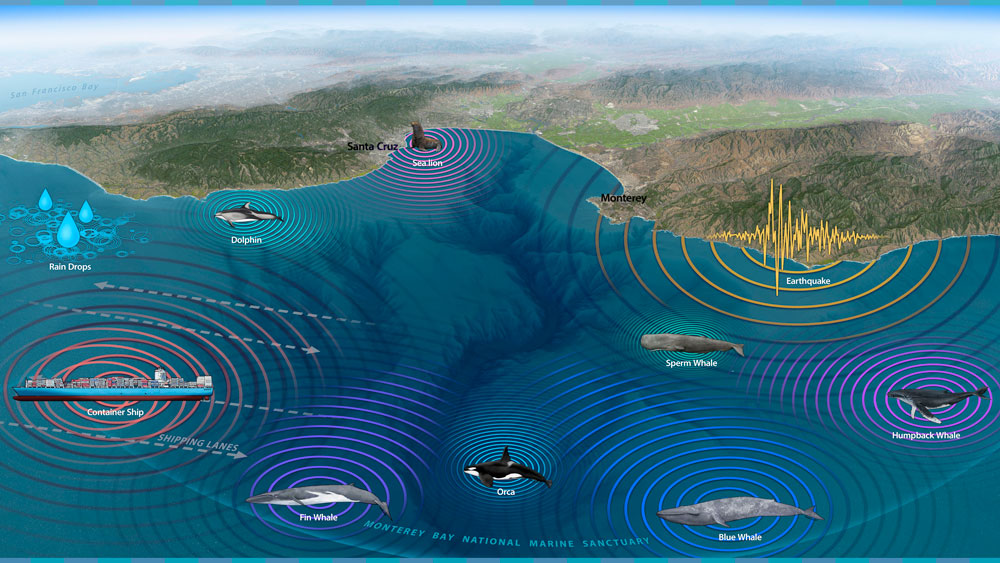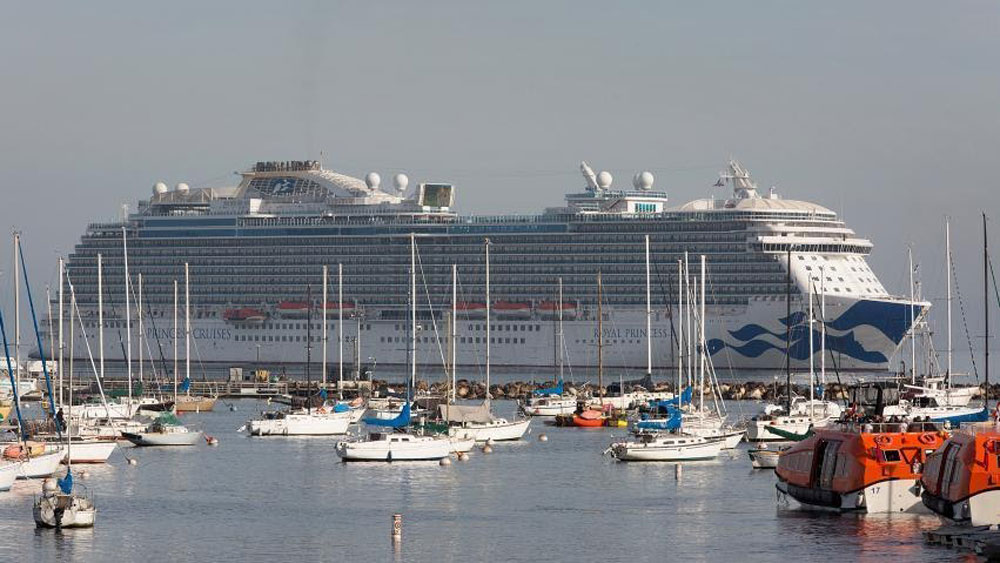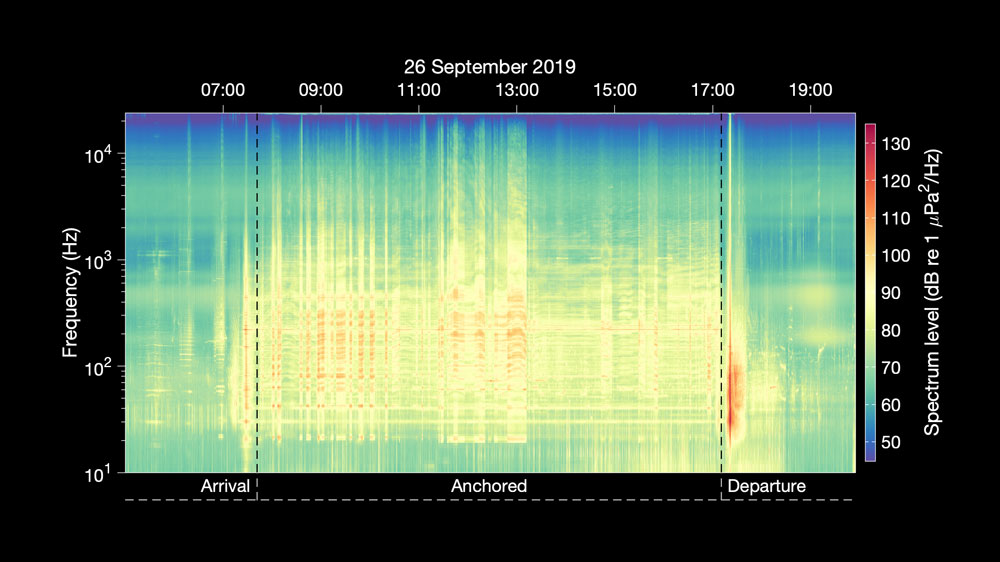Understanding Underwater Noise in Monterey Bay National Marine Sanctuary
By Lisa Uttal
April 2021
Within the cacophony of the ocean “soundscape,” there is singing and chattering of marine mammals, the steady thrum of propellers from transiting container ships, and even the pitter patter of rain on the ocean’s surface. SanctSound scientists record and listen to sounds year-round in Monterey Bay National Marine Sanctuary using a network of hydrophones or underwater microphones. Sound is critical to how marine animals live and interact with other animals and their surroundings. Monitoring these sounds helps us to better understand how noise from various human-related sources and activities may influence animals in the sanctuary.

Sound can travel far and fast in water. In addition to the regular fishing and recreational vessels in the sanctuary, large container ships transiting 50 miles or more offshore in shipping lanes can be heard by SanctSound hydrophones. In 2005, cruise ships began to bring tourists into Monterey Bay to enjoy its incredible beauty and biodiversity. These cruise ships, while infrequent, brought a new type of vessel noise to the soundscape and into more nearshore waters than typically frequented by shipping traffic.
Zooming In
SanctSound and Monterey Bay Aquarium Research Institute (MBARI) hydrophones record various sounds in the sanctuary. Scientists are able to identify the individual sound sources when they analyze the data.

Below is a spectrogram (sonograph) of the Princess Cruise Line’s Star Princess visit to Monterey Bay on September 26, 2019, showing the sound of arrival, anchoring period, and departure of the ship as it was recorded by one of the SanctSound listening stations. As the ship approached and was over the hydrophone, sound intensity increased, as indicated by the yellow and red colors. During the nine and a half hour time period when the ship was anchored, the hydrophone recorded the sounds of tender boats transporting tourists between the cruise ship and the harbor. Compared to the ship’s arrival, sounds produced during the ship’s departure were far louder, indicating the vessel’s increased speed. The Star Princess was traveling twice as fast during its departure than it was during arrival. This illustrates how sound levels tend to increase with increasing speed of a vessel.
Video by Monterey Bay Aquarium Research Institute
Zooming Out
There can be a clear contribution by visiting cruise ships to the local soundscape of Monterey Bay. However, the noise of an individual ship can vary by size, speed, activity type (e.g., positioning, bow thrusters, transits by tender boats to and from the dock, use of anti-biofouling devices), and how far away it is.
Sixteen cruise ships came to Monterey Bay in 2019. Among all vessels tracked, cruise ships represented less than 1% of the total. In general, the sanctuary’s soundscape is dominated by many other loud short-term events like container ships offshore, storms, afternoon winds, or explosives used to deter seals from fishing nets. At times the soundscape is dominated by natural sounds, including the booming voices of the largest animal on earth -- the blue whale.

Over 36 different kinds of whales, dolphins, and otters are residents of or visit Monterey Bay National Marine Sanctuary annually. Studying and identifying human-made (ships and boats), biological (marine mammals, fish), and environmental (earthquakes, wind, rain) sounds greatly increases our understanding of this complex ecosystem and how to protect it.
Listening Over Time
Studying the sounds made by cruise ships in Monterey Bay National Marine Sanctuary highlights how important it is to monitor soundscapes over long periods of time. By recording over months and years, we can assess the influence of human activities and how they interact with the natural environment. With this knowledge, SanctSound scientists help sanctuary managers better understand Monterey Bay National Marine Sanctuary’s ecosystem, and in turn help us make well-informed decisions about how to protect it.
Lisa Uttal is an education and outreach specialist for Monterey Bay National Marine Sanctuary.

